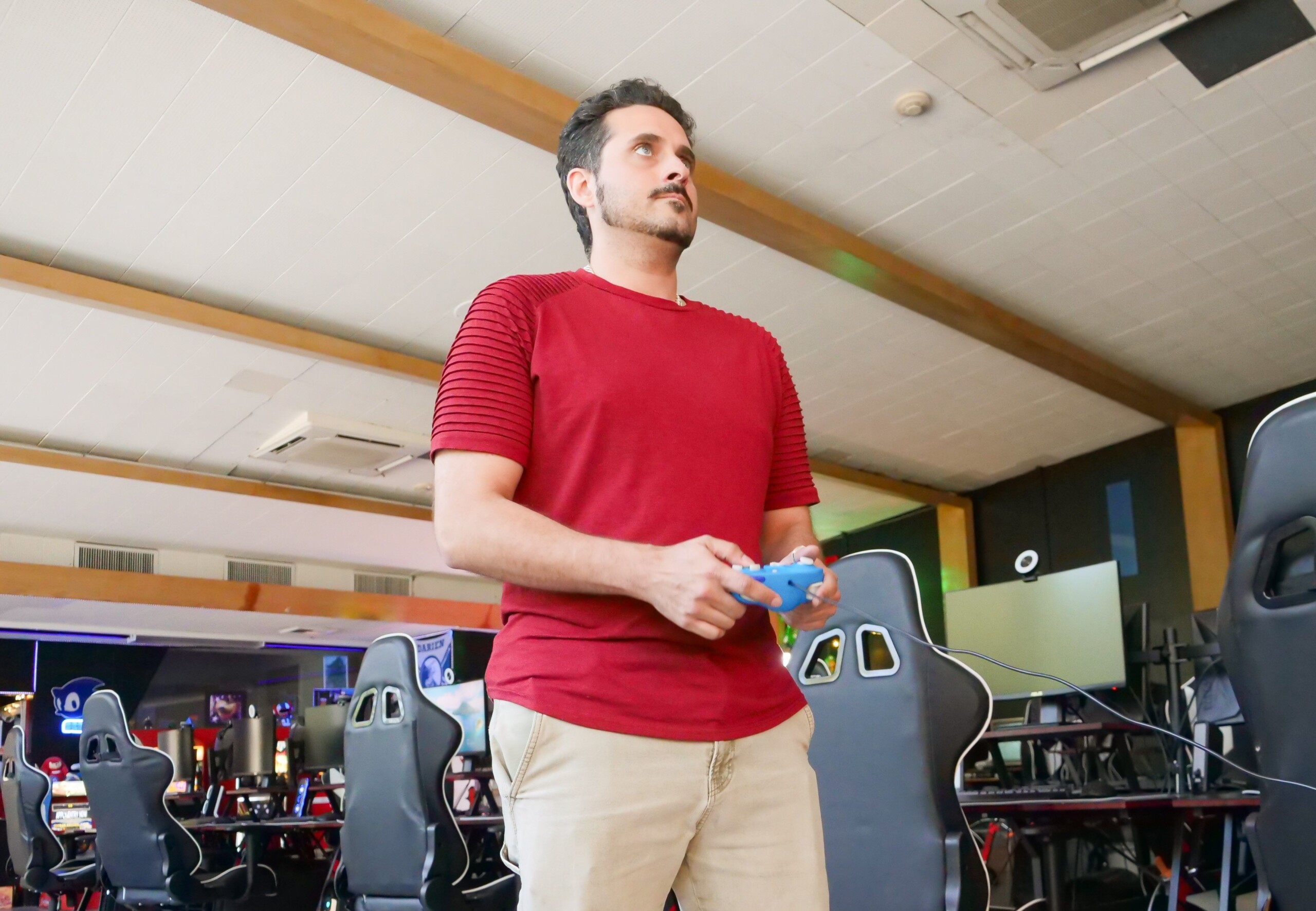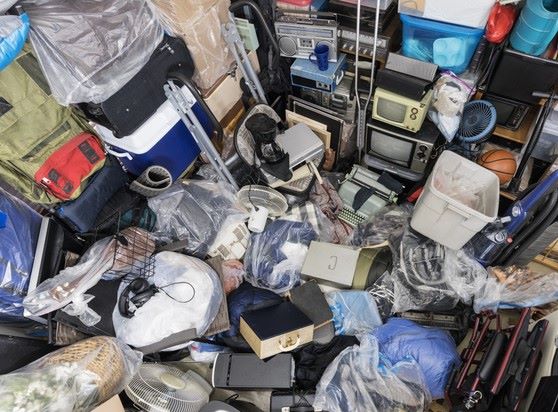In a vast room with large pane windows, sunlight is not the brightest light to illuminate Culver City High School’s (CCHS) Alexander R. Hamilton Educational Technology Center.
The clicking of power switches turned into the electric humming of machines as the room comes alive. Bright lights of various colors, both the low luminescence of neon displays of old and the clean, flashy patterns from rainbow LEDs and digital displays light up the lab as much as the sunshine beaming inside.
This animated scene is a stark difference from what the center looked like just a few years ago. It all started in the Summer of 2021 with an opportunity from one of the industry’s biggest players.
Epic Games — the creators of the worldwide video game sensation Fortnite — offers grants to community members through the Epic MegaGrants program, which functions to support projects in game development that may not otherwise have the funding to materialize.
Ebony Nicholson — the Assistant Principal at Culver High School specializing in Athletics, Arts and Career Technical Education —was primarily responsible for coming up with a way to qualify for this grant meant to support video game projects. Money can be hard to come by at public schools, so extra efforts are made to qualify to accept the grant when it becomes an option.
“When money just falls in your lap,” Nicholson said of the grant, “You ask ‘what do we need to do to make this happen?’”
CCHS was awarded a $100,000 grant thanks to the efforts of Nicholson, Film Teacher Holly Gable, and Culver City Unified School District Arts Coordinator Heather Moses. The project that Nicholson established was a new Game Design Pathway, a two-year academic track that debuted in the 2022-23 school year.
Students in the pathway learn how to build multi-dimensional games from scratch, with a curriculum that game designer Kian Darien — who teaches the classes in the pathway and was involved in writing the grant even before being hired — put together. Using top-end software like graphics engine Unreal Engine and animation software Blender, kids learn the skills needed to put games together from scratch, then come together in groups to create games through two year-long courses: Game Design I and Game Design II.
The money from the grant was used to purchase 31 brand-new computers with some of the best components available to revamp the computer lab. The computers are made by Alienware — one of the most reputable brands in the gaming computer business — and include top-end parts like the GeForce RTX 3060 graphic card that currently retails at $329 a piece.
It was a long overdue makeover for the lab, which had become particularly obsolete after the COVID-19 pandemic. With virtual classes being the only medium available, students were given laptops with technology on par with the computer lab so each student could fully participate.
“The computer lab was just there with these ancient computers,” Nicholson said. “The yearbook class would go in for one period a day or something like that, but it was really just a waste of space.”
A newly upgraded computer lab put together with love and care from Darien was a perfect venue for these classes. After working for companies like Red Bull and Razer, Darien now has his own independent game design studio and a clear passion for the industry as a whole, and that can be seen in the fullness and personality injected into the lab.
On top of the money spent to revitalize the room from grants, Darien used money out of his own pocket to bring in retro arcade machines with classic games like NBA Jam and Donkey Kong. A Nintendo Entertainment system rests just a few feet away from these machines connected to an old CRT TV. There is even a rudimentary machine for kids to play the arcade music series Dance Dance Revolution and similar games.
“[It is] a living museum of game history and a place to hang out,” Darien said. “It really makes students want to come to class.”
Displaying both the innovation and charm of the past with the technological progress of the present, the lab served as the perfect setting to show kids exactly what it meant to design a video game.
“The more simple core game ideas [from the past] are still what dominates the market today,” Darien said. “Understanding that and having an appreciation for that…is vital to understanding how to make games instead of just the raw skills behind them.”
But kids can’t just start from scratch to build games, so the first weeks of Game Design I are spent building the skills required. They learn basic aspects of the field like level design, how to use 3D art, and how to program the games to make them function just as they imagined.
Once these baseline skills are built up in the first part of Game Design I, students are put into groups of six to eight to design games. The students fill roles similar to real game design teams, assigned titles like coder, producer, designer, or artist to collaborate and build these individual games.
“We get them to a point of being competent and understanding how to make something from beginning to end in all of these different arenas,” Darien said.
At the end of the class, there is a contest where the groups show off their games and vote on whose is the most complete. For the most recent class of Game Design I, the winner of that contest was a game titled “Mr. Incognito.” The game features all the hallmarks of a completed title: from music and cutscenes to polished controls and a coherent plot.
Other games may not have been as complete in the short two-month time frame that the groups get to build the games, but each game feels distinct, a testament to the creativity and individuality that the game design space allows. Darien believes that working on designing a game instills skills beyond what many see on the surface.
While Game Design I only requires students to make games with a few functional buttons, Game Design II dives into deeper concepts with the baseline skills already instilled, being given six months to program their game instead of two. One game from the class is a first-person shooter-style game that uses a card-collecting system that allows players to cast different spells to fight enemies.
The team behind the game even went as deep as creating a unique art filter that defined the aesthetic of the game, but Darien says they perhaps bit off more than they could chew with the limited time they had in the class.
But this level of investment shows how kids can use love for gaming to spur their imaginations, show ambition and excitement, and learn to cooperate to complete a larger task. Skills that translate to other traditional jobs — like creating pitch decks and marketing their product — are key components of the class. Darien called on his personal experience in the many aspects of game design projects to include all the elements necessary to succeed in the industry.
“Having the experience of managing teams to make all sorts of projects and participating in virtually every angle of game development gives me a really unique perspective,” Darien said.
Darien knows that making one’s own game goes beyond the coding and computer screens. Marketing is another crucial aspect of bringing a game to fruition, and Darien ensures his students understand that through the class’s final project.
“[Students] display their games in a kind of expo format,” Darien said of the Game Jam. “They have trailers, they have their marketing, and they make covers.”
There were detractors from the outside, Nicholson recalls, that questioned why the school was spending money on what they saw as a fruitless hobby. Nicholson recalled the idea of “shop classes” like woodshop and printmaking prevalent in high schools in the past that taught life skills outside of the traditional math, humanities, and sciences that make up the core of most curriculums today.
The world of e-Sports has become a new and burgeoning industry estimated to be worth nearly $1.4 billion, and the gaming industry as a whole was long established and given a huge boost by the pandemic. Career Technical Education programs — which are meant to instill 21st-century skills in middle and high school students similar to old shop classes — are not new at CCHS, and managing them is part of Nicholson’s job description.
“This is an actual industry where people make a lot of money, and our kids are naturally inclined to do this,” Nicholson said. “Why would we not want to support that?”
This confidence has paid off, as the class has been successful over the first four semesters of its existence. Darien teaches four Game Design classes with 20 to 30 students each and also hosts afterschool programs to further engage kids.
One of those additional activities is a new e-Sports team established this past school year. The Culver City Kairon team debuted in two games during the 2023-24 school year: Nintendo’s Super Smash Brothers Ultimate and Epic Games’ Fortnite.
Success has come quickly for the team, achieving national success playing in tournaments through host Vanta, which specializes in youth e-Sports services like coaching and tournament hosting.
The team comes with all the aspects one would expect from organized competitive sports, including two weekly practice sessions after school with Darien serving as coach. Darien — who is proficient at Smash Brothers games himself — is also throwing a boot camp later this month for kids to keep sharp over the summer.
Money is always a concern when discussing the future of these types of programs, but there is confidence that this Game Design pathway is here to stay. With funding through the Epic Games grant and other means like state CTE grants, Darien is committed to teaching kids the skills they need to succeed not just in gaming, but in life as a whole.
“In any industry, but especially creative industries, kids can get strung along and will chase the wrong things,” Darien said. “I want to try to give students a good head on their shoulders and give them the understanding of how things work so they can walk into [life] knowing where they stand.”
Photo of Kian Darien taken by the author.
Stay informed. Sign up for The Westside Voice Newsletter
By clicking submit, you agree to share your email address with Westside Voice. We do not sell or share your information with anyone.








